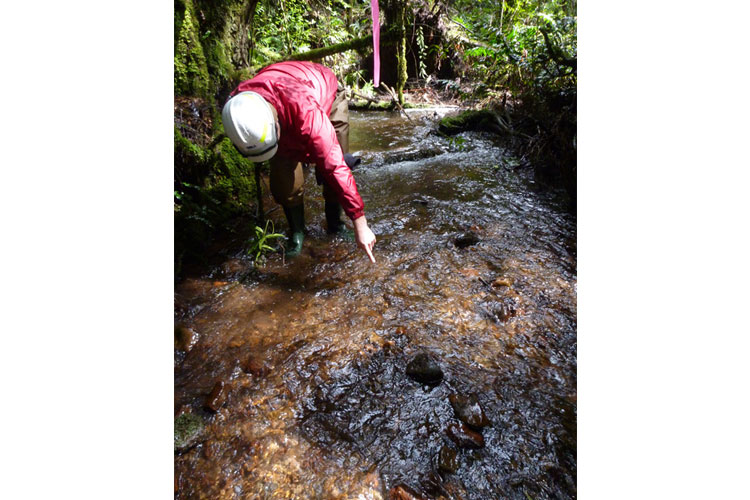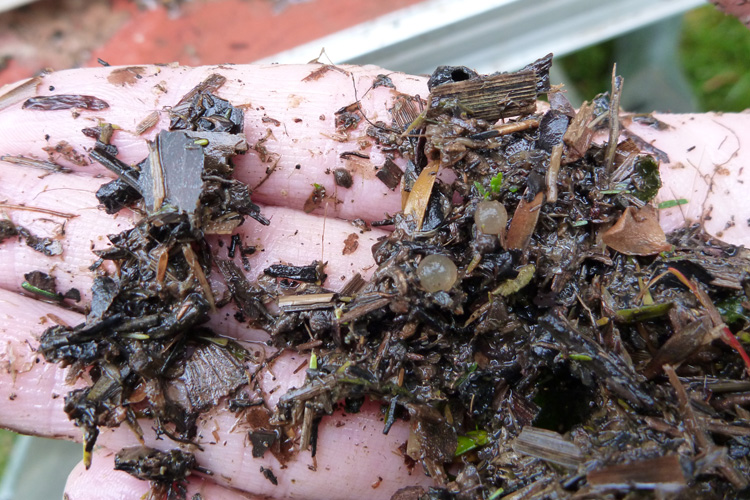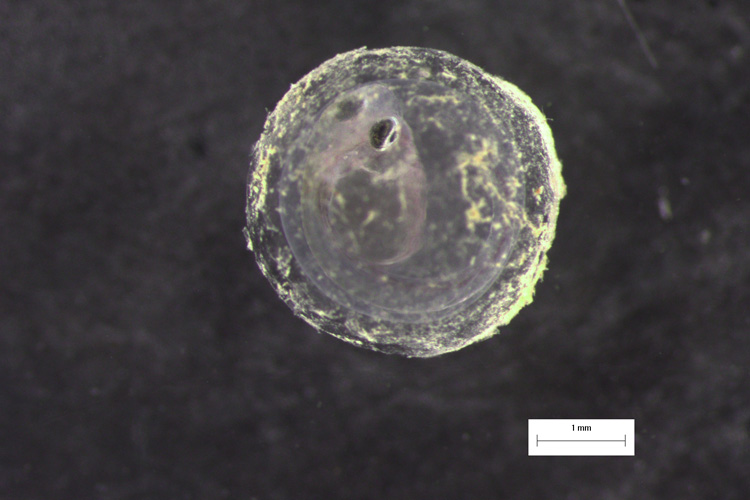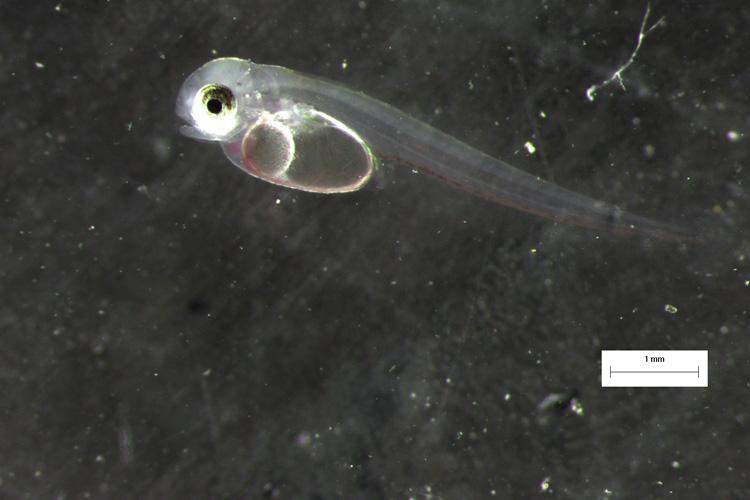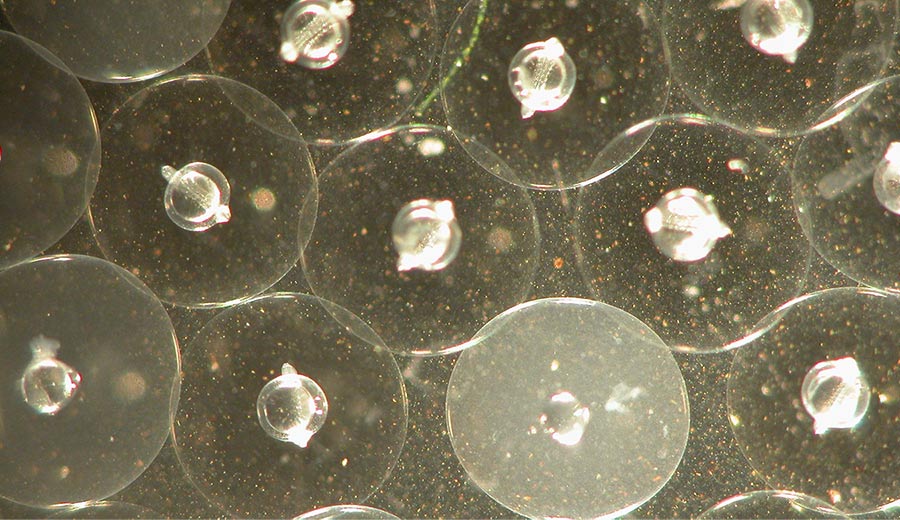 Golden perch eggs, 10 hours old
Golden perch eggs, 10 hours oldThis is the most common method and involves either:
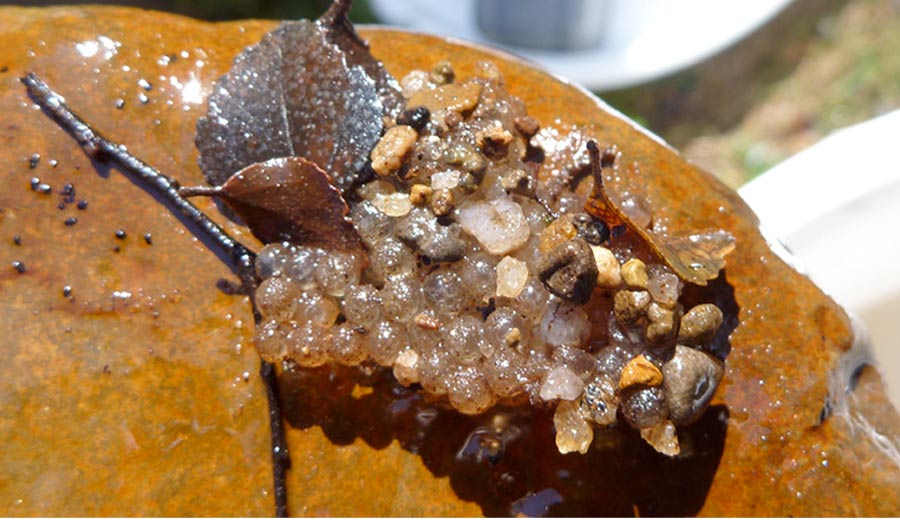 Barred galaxias egg cluster attached to a cobble substrate
Barred galaxias egg cluster attached to a cobble substrateCartilaginous fishes such as sharks and rays use this method and lay eggs or give birth to live young. Introduced species such as mosquitofish (Gambusia holbrooki) are the only other species in Australian waters to use this method.
Contrary to popular belief, most popular coastal recreational fish do not spawn in estuaries!
Spawning habitats vary greatly. Fresh and saltwater fish move within and between waters to seek out mates and suitable habitat to spawn. The Australian bass (Macquaria novemaculeata) is the only popular recreational fish that uses estuaries for spawning. The saltwater and estuarine species most fishers are familiar with spawn outside the estuary, usually in in-shore areas.
